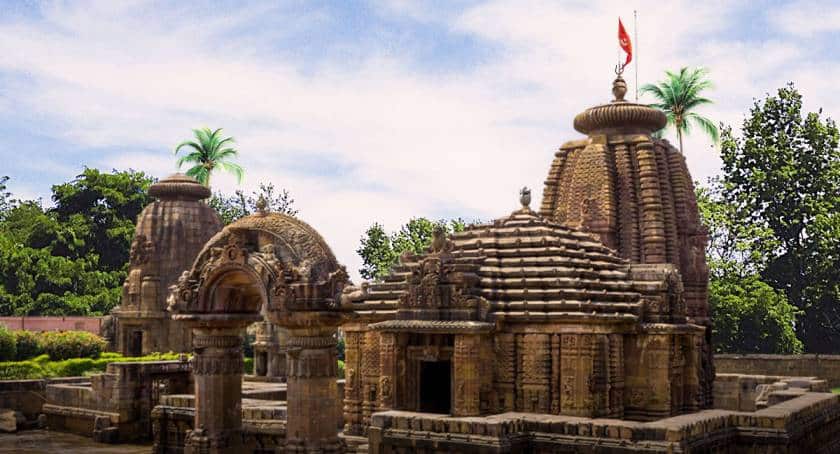Mukteswara Temple: A Sacred Symphony in Stone
Odisha, the land of temples, is home to some of the best architectural masterpieces in India. The Mukteswara Temple, located in Bhubaneswar, is a testament to the grandeur of Kalinga architecture. This temple, dating back to the 10th century, honors Lord Shiva and is often called the “Gem of Odisha Architecture.” With its complex carvings, elaborate torana (arched gateway), and spiritual significance, the Mukteswara Temple continues to captivate historians, devotees, and travelers alike.
The Enchanting History of Mukteswara Temple
The Mukteswara Temple, built around 950 CE, is dedicated to Lord Shiva, the deity of liberation (Mukteswara means ‘Lord of Freedom’). It is a crucial part of Bhubaneswar’s temple city, which once housed thousands of ancient shrines. Built during the rule of the Somavamsi dynasty, it marks a significant transition in Odishan temple architecture, bridging the gap between early and later Kalinga temple styles.
The temple’s complex carvings and harmonious proportions reflect the advanced artistry of the period. It is also associated with tantric traditions prevalent in Odisha, further adding to its historical and spiritual significance.
Amazing Architectural Wonders and a Visual Delight
The Mukteswara Temple invented Odishan architecture, introducing elaborate decorations and sculptural innovations. Some of its most striking features include:
- The Magnificent Torana: Gateway to Divinity
One of the most striking features of Mukteswara Temple is its elaborately decorated torana (arched gateway), which is unique in Odisha’s temple architecture. The Torana is adorned with complex carvings of celestial beings, floral patterns, and mythological motifs, making it a spectacular example of sculptural excellence.
- The Sanctum Sanctorum: Spiritual Core
The main sanctum (garbhagriha) houses the Shiva Lingam, where devotees offer prayers and seek blessings. The finely sculpted walls surrounding the sanctum depict scenes from Hindu mythology, including stories from the Panchatantra, which is unusual for a Shiva temple.
- Vimana: The Towering Wonder
The vimana (temple tower) of Mukteswara Temple stands relatively low but features ornate carvings of deities, dancers, and complex latticework. Unlike later temples in Bhubaneswar that have towering spires, Mukteswara’s vimana has a compact yet elegant structure that highlights the artistic transition in Odisha’s temple designs.
- The Jagamohana: A Hall of Worship
The jagamohana (assembly hall) is another significant architectural feature known for its beautiful carved pillars and ceiling. Beautiful sculptures of apsaras (celestial nymphs) and motifs representing divine beings adorn the interior of this hall.
The Spiritual Essence
The Mukteswara Temple is a visual delight and a spiritual haven. Devotees believe that worshiping Lord Shiva here will result in moksha or freedom from the cycle of birth and death, so they come to ask for his blessings. The serene atmosphere and calm surroundings make it ideal for meditation and introspection.
The Rituals and Festivals
- Shivaratri is the most important festival celebrated at Mukteswara Temple. Devotees gather in large numbers to perform special rituals and pray all night.
- The Mukteswara Dance Festival is an annual event that showcases Odissi dance performances. It brings together classical dancers from across India. The temple, illuminated in the evening, creates a captivating ambiance for this cultural feast.
Hidden Symbols and Meanings
The temple’s carvings are not just for aesthetics; they hold profound meanings:
- Historians believe that the Torana symbolizes the gateway to spiritual enlightenment.
- The presence of meditating sages and ascetics represents the pursuit of knowledge and self-discipline.
- The serpent motifs around the temple depict the cosmic energy of Lord Shiva.
A Photographer’s and Historian’s Delight
Mukteswara Temple is a treasure trove of inspiration for photographers and history enthusiasts. The interplay of light and shadow on its complex carvings, the finely chiseled statues, and the stunning backdrops provide endless opportunities for breathtaking captures.
Historians find the temple a crucial link between early and later styles of Kalinga architecture, offering insights into the evolution of temple designs in India.
A Classic Wonder: Mukteswara Temple
It is not just a place of worship but a living evidence of India’s artistic and spiritual heritage. Standing gracefully for over a thousand years, it enchants visitors with its ethereal beauty and profound symbolism. Whether you seek architectural splendor, cultural immersion, or spiritual solace, this temple welcomes you with open arms into the world of timeless devotion and craftsmanship.
So, the next time you visit Bhubaneswar, let the Mukteswara Temple be a highlight of your journey. Let its ancient stones whisper stories of a glorious past as you enter a realm of divinity and artistic brilliance.


